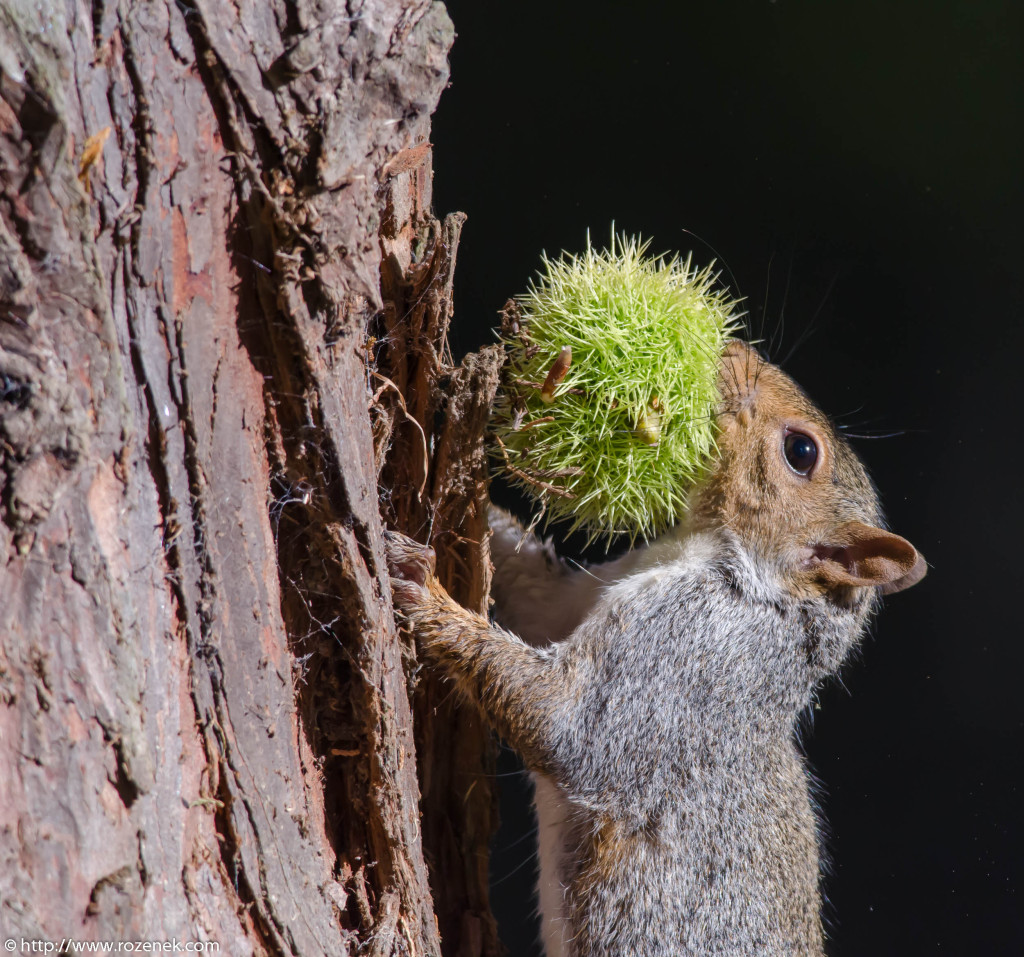Eastern Gray Squirrel (PL: Wiewiórka Szara)
In the United Kingdom and in Ireland, the eastern gray squirrel has few natural predators. This has aided its rapid population growth and has led to the species being classed as a pest. Measures are being devised to reduce its numbers, including one plan for celebrity television chefs to promote the idea of eating the squirrels.
In areas where relict populations of red squirrel survive, such as the islands of Anglesey and Brownsea, programs seeking to eradicate pest squirrels are in progress in an effort to allow red squirrel populations to recover.
Although complex and controversial, the main factor in the eastern gray squirrel’s displacement of the red squirrel is thought to be its greater fitness and, hence, a competitive advantage over the red squirrel on all measures. The eastern gray squirrel tends to be larger and stronger than the red squirrel and has been shown to have a greater ability to store fat for winter. The squirrel can therefore compete more effectively for a larger share of the available food, resulting in relatively lower survival and breeding rates among the red squirrel. Parapoxvirus may also be a strongly contributing factor; red squirrels are fatally affected by the disease, while the eastern gray squirrels are unaffected but thought to be carriers. The red squirrel is also less tolerant of habitat destruction and fragmentation which has led to its population decline, while the more adaptable eastern gray squirrel has taken advantage and expanded.
 NIKON D7000 (420mm, f/6.3, 1/2000 sec, ISO1000)
NIKON D7000 (420mm, f/6.3, 1/2000 sec, ISO1000)
 NIKON D7000 (420mm, f/6.3, 1/400 sec, ISO1600)
NIKON D7000 (420mm, f/6.3, 1/400 sec, ISO1600)
 NIKON D7000 (420mm, f/6.3, 1/2000 sec, ISO320)
NIKON D7000 (420mm, f/6.3, 1/2000 sec, ISO320)
 NIKON D7000 (420mm, f/6.3, 1/2000 sec, ISO1000)
NIKON D7000 (420mm, f/6.3, 1/2000 sec, ISO1000)
Similar factors appear to have been at play in the Pacific region of North America, where the native American red squirrel has been largely displaced by the eastern gray squirrel in parks and forests throughout much of the region.
